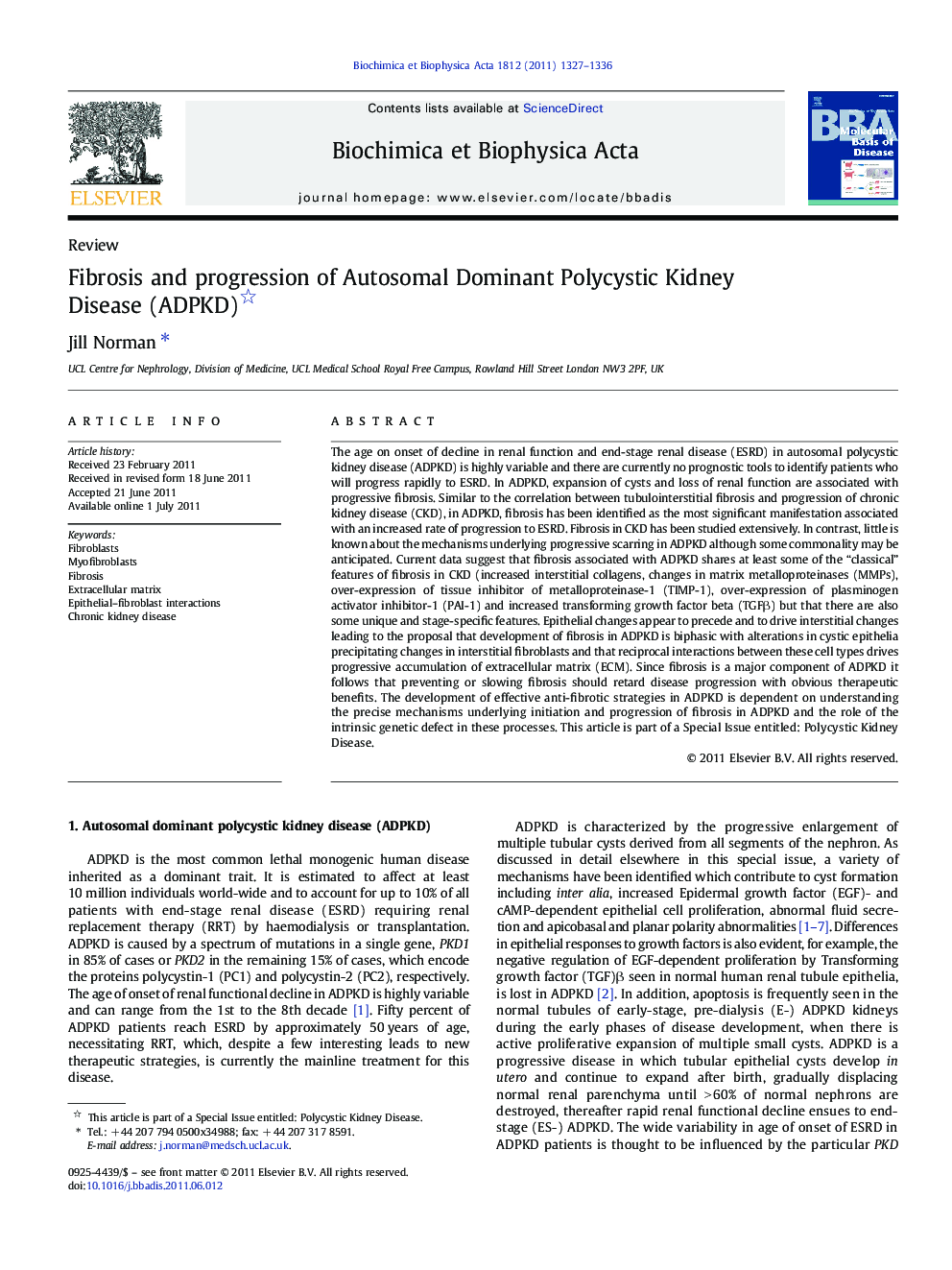| کد مقاله | کد نشریه | سال انتشار | مقاله انگلیسی | نسخه تمام متن |
|---|---|---|---|---|
| 1905171 | 1534691 | 2011 | 10 صفحه PDF | دانلود رایگان |

The age on onset of decline in renal function and end-stage renal disease (ESRD) in autosomal polycystic kidney disease (ADPKD) is highly variable and there are currently no prognostic tools to identify patients who will progress rapidly to ESRD. In ADPKD, expansion of cysts and loss of renal function are associated with progressive fibrosis. Similar to the correlation between tubulointerstitial fibrosis and progression of chronic kidney disease (CKD), in ADPKD, fibrosis has been identified as the most significant manifestation associated with an increased rate of progression to ESRD. Fibrosis in CKD has been studied extensively. In contrast, little is known about the mechanisms underlying progressive scarring in ADPKD although some commonality may be anticipated. Current data suggest that fibrosis associated with ADPKD shares at least some of the “classical” features of fibrosis in CKD (increased interstitial collagens, changes in matrix metalloproteinases (MMPs), over-expression of tissue inhibitor of metalloproteinase-1 (TIMP-1), over-expression of plasminogen activator inhibitor-1 (PAI-1) and increased transforming growth factor beta (TGFβ) but that there are also some unique and stage-specific features. Epithelial changes appear to precede and to drive interstitial changes leading to the proposal that development of fibrosis in ADPKD is biphasic with alterations in cystic epithelia precipitating changes in interstitial fibroblasts and that reciprocal interactions between these cell types drives progressive accumulation of extracellular matrix (ECM). Since fibrosis is a major component of ADPKD it follows that preventing or slowing fibrosis should retard disease progression with obvious therapeutic benefits. The development of effective anti-fibrotic strategies in ADPKD is dependent on understanding the precise mechanisms underlying initiation and progression of fibrosis in ADPKD and the role of the intrinsic genetic defect in these processes. This article is part of a Special Issue entitled: Polycystic Kidney Disease.
► In ADPKD, expansion of cysts is accompanied by progressive fibrosis leading to end-stage renal failure.
► In CKD of diverse etiologies, tubulointerstitial fibrosis provides the best correlation with progression to organ failure and has been studied extensively.
► Similar to CKD, fibrosis in ADPKD is associated with a more rapid decline in renal function.
► Although fibrosis in ADPKD shares some features of CKD fibrosis there are unique, stage-specific features.
► Anti-fibrotic therapies may prove an effective adjunct to treatment of ADPKD.
Journal: Biochimica et Biophysica Acta (BBA) - Molecular Basis of Disease - Volume 1812, Issue 10, October 2011, Pages 1327–1336